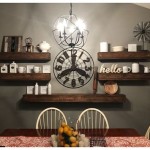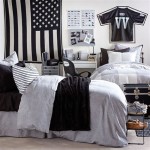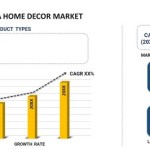3D Home Decor: Transforming Interior Spaces with Additive Manufacturing
3D printing, also known as additive manufacturing, is revolutionizing various industries, and home decor is no exception. 3D printed home decor offers unprecedented design freedom, customization options, and sustainability potential, transforming how individuals personalize and enhance their living spaces.
The process involves building three-dimensional objects layer by layer from a digital design file using specialized 3D printers. Various materials can be utilized, including plastics like PLA (polylactic acid) and ABS (acrylonitrile butadiene styrene), resins, metals, ceramics, and even wood composites. This material diversity allows for the creation of a wide range of decorative items, from intricate wall art and personalized sculptures to functional pieces like lamps, vases, and furniture components.
One of the key advantages of 3D printed home decor is the level of customization it affords. Consumers can choose from a vast library of pre-designed models available online or create their own unique designs using 3D modeling software. This empowers individuals to tailor decor elements precisely to their aesthetic preferences, matching specific color schemes, patterns, and overall room styles. It also allows for the creation of personalized gifts and commemorative items incorporating names, dates, or other significant details.
Beyond customization, 3D printing opens doors to intricate and complex designs that are difficult or impossible to achieve through traditional manufacturing methods. Intricate lattice structures, organic shapes, and highly detailed patterns can be readily produced, adding a touch of artistry and uniqueness to any space. This capability allows designers to push the boundaries of creativity and explore new aesthetic frontiers in home decor.
Furthermore, 3D printing contributes to sustainability in several ways. On-demand manufacturing reduces waste by producing only what is needed, minimizing excess inventory and material scrap. The use of biodegradable filaments like PLA, derived from renewable resources such as cornstarch, further enhances the eco-friendly aspect. Localized production, enabled by accessible 3D printing technology, reduces transportation distances and associated carbon emissions. Additionally, the durability and longevity of 3D printed objects contribute to a reduction in consumption and waste generation in the long run.
The accessibility of 3D printing technology is also rapidly increasing. Desktop 3D printers are becoming more affordable and user-friendly, empowering individuals to create their own home decor items. Online platforms and communities dedicated to 3D printing provide access to design files, tutorials, and support, fostering a collaborative and innovative ecosystem. This democratization of design and manufacturing empowers individuals to actively participate in the creation of their living spaces.
Several applications demonstrate the versatility of 3D printing in home decor. Wall art featuring intricate geometric patterns or personalized text can add a unique focal point to any room. Custom-designed lampshades and light fixtures can create ambient lighting effects and serve as statement pieces. Functional objects like vases, planters, and organizers can be tailored to specific needs and aesthetic preferences. Furthermore, 3D printed furniture components, such as handles, knobs, and decorative accents, can add personalized touches to existing furniture pieces.
While 3D printing offers significant advantages, it's essential to acknowledge certain limitations. The size of printable objects is often constrained by the build volume of the 3D printer. Printing speed can be a factor, particularly for larger or highly detailed objects. Post-processing steps, such as removing support structures and surface finishing, might be required depending on the material and desired aesthetic. Material selection also influences the durability, appearance, and suitability of the final product for specific applications.
Despite these limitations, the potential of 3D printing in home decor is vast and continually expanding. As technology advances and material options broaden, the quality, affordability, and accessibility of 3D printed decor items are expected to improve further. This will undoubtedly lead to wider adoption and further innovation in the field, empowering individuals to create truly personalized and expressive living spaces.
The integration of 3D printing with other technologies, such as augmented reality (AR) and virtual reality (VR), further enhances the design process. AR applications can overlay virtual 3D models onto real-world environments, allowing users to visualize how a particular piece of decor will look in their space before printing. VR can immerse users in virtual environments where they can interact with and manipulate 3D models, facilitating the creation of complex and customized designs.
The future of 3D printed home decor is bright. As the technology matures and becomes more integrated into mainstream design and manufacturing processes, consumers can expect to see an increasing array of innovative and personalized decor options. This technology empowers individuals to shape their living environments in ways previously unimaginable, fostering creativity, self-expression, and a deeper connection with the spaces they inhabit.

Home Decor 3d Flower Canvas Wall Art Schilderijen Op Nederland

Sweet Home 3d Draw Floor Plans And Arrange Furniture Freely

3d Gray Wall Vinyl Photo Wallpaper Modern Home Decor Large Israel

Home Decor Pvc 3d Wallpaper

Pvc Living Room Wallpapers For Home Decor

High Quality Home Decor Pvc Waterproof 3d Wallpaper China Made In Com

A Unique 3d Wall Art With Wooden Frame Of Persian Cottage For Your H Gallery Eshgh

Modern 3d Wallpaper Wall Art Paper Mural Living Room In 2025 For Walls

Photo Wall Mural Wallpaper 3d Modern Covering Living Room Background Home Decor

3d Effect Pvc Wallpaper For Home Decor China Wall Paper Made In Com







